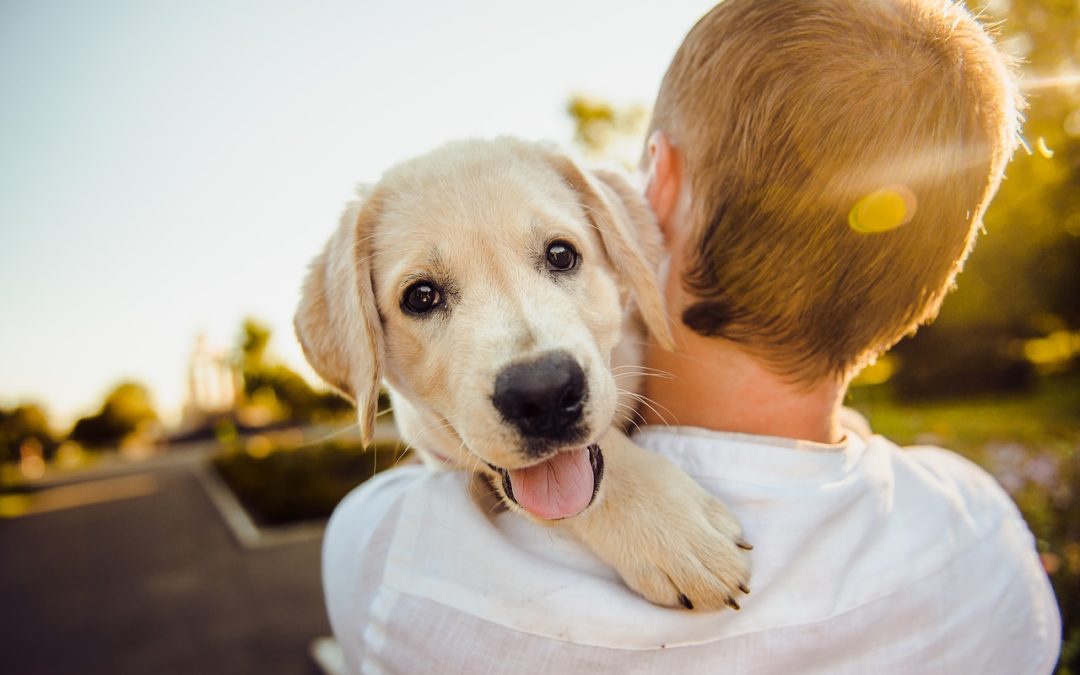It’s an exciting time of the year! Back to school season is a big transition for parents and kids. It’s also a big transition period for our pets.
The start of the school year means that our pets may have to adjust to being alone for most of the day, which can create some loneliness, boredom or anxiety.
This change can lead to frustrating behaviors like barking, chewing, inappropriate elimination or destruction around the house. But resist scolding your pets! Instead, here are some tips to help make the back to school transition a little easier.
1. Build up to longer absences (it’s not too late to begin!)
If your pet struggles with being alone for the school or workday, try to start with short absences and build up to longer periods of time. The ASPCA recommends starting with out-of-sight stay exercises, where you ask your dog to “stay” while you step out of sight for a moment or two. As your dog becomes more comfortable with this, you can increase the time you stay out of sight and eventually move to larger blocks of “away” time. You can also change your pet’s anxiety response to “leaving” cues by putting on your shoes, picking up your keys, but then sitting down in the house for several hours. But make sure your dog doesn’t have any signs of anxiety before increasing your training time! Signals of anxiety in dogs can include yawning, salivating, dilated pupils, or overly enthusiastic reunions.
2. Keep them occupied
Giving your dog exercise before you go and activities for when you’re away can help relieve their separation anxiety. Food puzzle or “feeder” toys, like a classic Kong stuffed with treats and frozen, keeps your dog engaged in a fun activity while also getting a nice reward. Another strategy is to hide treats or small bits of food around the house before you go, which your pet can then “hunt” for while you’re away. Cats may benefit from streaming video of birds, fish, etc, or even a safe enclosed “catio”
3. Stay calm
Help your pet dog get used to you leaving by making a calm routine around departures. Give them a favorite toy or treat as you go to show that leaving isn’t something bad. You can also teach them an “easy” or “relax command” Your demeanor can influence your pet too, so make sure to stay calm and even when you leave! Consider a pheromone collar or diffuser to help them relax while you are gone.
4. Use the buddy system
An abrupt transition from having people around all day to seeing no one during the school day can feel lonely and contribute to separation anxiety. If your dog has trouble being alone, consider having a pet sitter stay with them during the day. This can be a friend, neighbor, family member, or licensed sitter; anyone who could interact with your pet during the day. There are also daycares where dogs can go and engage in supervised play with others. Dog walking services also can be scheduled for your pet’s peak anxiety period
5. Talk to a professional
Sometimes medication can help pets who experience separation anxiety, especially if it is severe. Be sure to record some video of the behavior to pinpoint what the trouble might be. Call Firehouse to connect with Dr. Spencer about any of the techniques we describe, and whether medication might be helpful for your pet.
Trainers can also help eliminate unwanted behaviors and create a more soothing environment for your pet.
Going back to school is a time of change for the whole family. By following these tips you can create a plan of action to help your pets have as smooth of a back to school transition as possible.

